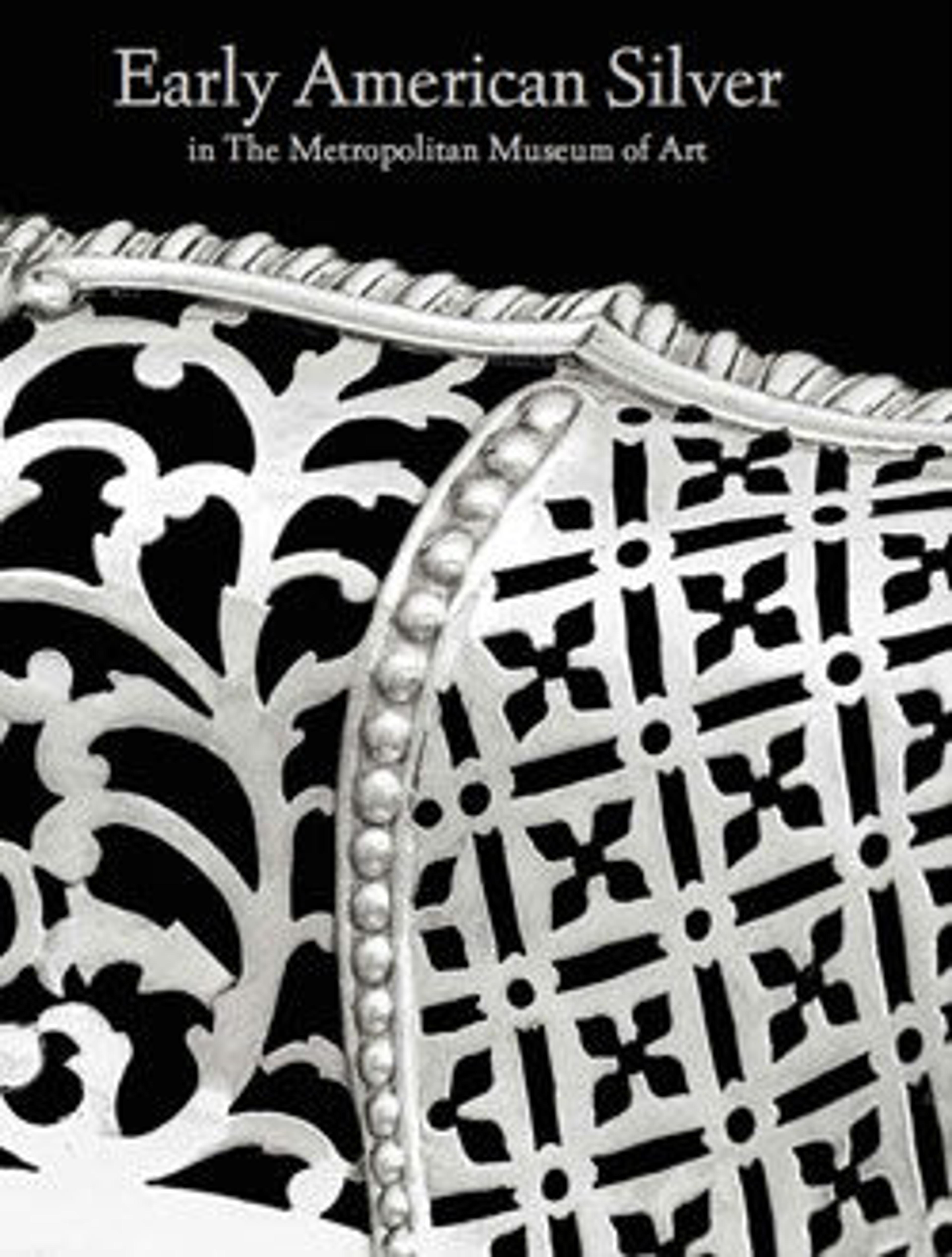Porringer
Beginning around 1725, the so-called keyhole pattern became the most popular design for porringer handles. Its name derives from the keyhole- or teardrop-shaped piercing at the tip of the handle.
This particular porringer was made by the prolific Boston silversmith Benjamin Burt as part of a large order of silver placed by Providence, Rhode Island merchant Moses Brown (1738–1836) prior to his 1764 marriage to his cousin Anna Brown (1744–1773). Anna’s wedding silver was secured through an inheritance she received from her father—and Moses’s uncle—Obadiah Brown (1712–1762). Surviving correspondence documents the order for this silver from Burt, as well as Burt’s subcontracting of the engraving to fellow Boston silversmith and engraver Nathaniel Hurd (1729/30–1777). The engraving on the handle of the Brown family crest and the inscription OB to AB commemorates the generous bequest of Obadiah Brown to his daughter, Anna Brown.
This particular porringer was made by the prolific Boston silversmith Benjamin Burt as part of a large order of silver placed by Providence, Rhode Island merchant Moses Brown (1738–1836) prior to his 1764 marriage to his cousin Anna Brown (1744–1773). Anna’s wedding silver was secured through an inheritance she received from her father—and Moses’s uncle—Obadiah Brown (1712–1762). Surviving correspondence documents the order for this silver from Burt, as well as Burt’s subcontracting of the engraving to fellow Boston silversmith and engraver Nathaniel Hurd (1729/30–1777). The engraving on the handle of the Brown family crest and the inscription OB to AB commemorates the generous bequest of Obadiah Brown to his daughter, Anna Brown.
Artwork Details
- Title: Porringer
- Maker: Benjamin Burt (American, Boston, Massachusetts 1729–1805 Boston, Massachusetts)
- Date: 1763
- Geography: Made in Boston, Massachusetts, United States
- Culture: American
- Medium: Silver
- Dimensions: Overall: 2 x 8 3/16 in. (5.1 x 20.8 cm); 7 oz. 10 dwt. (233.7 g)
Lip: Diam. 5 5/16 in. (13.5 cm)
Body: Diam. 5 5/16 in. (13.5 cm) - Credit Line: Bequest of Alphonso T. Clearwater, 1933
- Object Number: 33.120.330
- Curatorial Department: The American Wing
More Artwork
Research Resources
The Met provides unparalleled resources for research and welcomes an international community of students and scholars. The Met's Open Access API is where creators and researchers can connect to the The Met collection. Open Access data and public domain images are available for unrestricted commercial and noncommercial use without permission or fee.
To request images under copyright and other restrictions, please use this Image Request form.
Feedback
We continue to research and examine historical and cultural context for objects in The Met collection. If you have comments or questions about this object record, please contact us using the form below. The Museum looks forward to receiving your comments.
